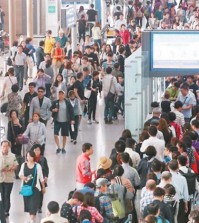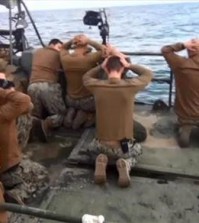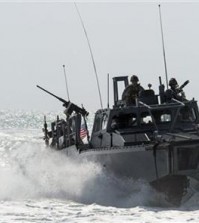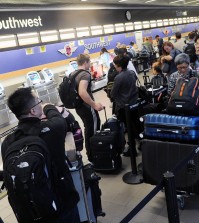- California Assembly OKs highest minimum wage in nation
- S. Korea unveils first graphic cigarette warnings
- US joins with South Korea, Japan in bid to deter North Korea
- LPGA golfer Chun In-gee finally back in action
- S. Korea won’t be top seed in final World Cup qualification round
- US men’s soccer misses 2nd straight Olympics
- US back on track in qualifying with 4-0 win over Guatemala
- High-intensity workout injuries spawn cottage industry
- CDC expands range of Zika mosquitoes into parts of Northeast
- Who knew? ‘The Walking Dead’ is helping families connect
Navy to get 3 more Aegis destroyers
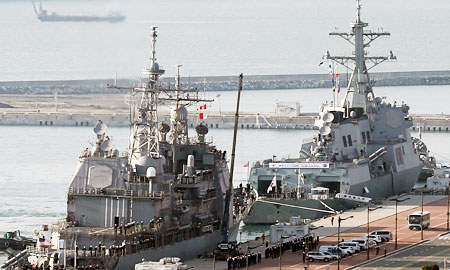
The U.S. Navy’s 9,800-ton Aegis cruiser Shilo, left, and Korea’s 7,600-ton Aegis destroyer Yulgok Yi I are anchored in Busan on Dec. 5. (Yonhap)
By Kang Seung-woo
South Korea decided Tuesday to build three more Aegis destroyers.
The Aegis beef-up is part of an overall plan aimed at strengthening military power in potential territorial disputes with China and Japan as well as deterring growing North Korean threats.
In a meeting of the Joint Chiefs of Staff (JCS), the complement plan, requested by the Navy a year ago, got the go ahead for the 7,600-ton ships at an estimated cost of 4 trillion won ($3.79 billion).
Deployment is expected between 2023 and 2027.
“The addition of three Aegis ships will improve Korea’s ability to counter North Korea’s threats,” the JCS said in a statement.
“They will also help the Navy deal with potential threats around the Korean Peninsula.”
Currently, the Navy has three Aegis warships ― the King Sejong the Great, the Seoae Ryu Seong-ryong and the Yulgok Yi I ― thanks to its buildup project, but it has sought to increase its fleet to cope with rising regional tension in the wake of North Korea’s third nuclear test conducted earlier this year and the ongoing territorial disputes.
The decision comes after the government announced Sunday the expansion of its air defense identification zone (ADIZ) that covers Ieodo in southern waters and the islands of Marado and Hongdo in response to China’s unilateral increase of its ADIZ also covering the submerged rock (Ieodo) on Nov. 23.
Japan has continued to claim Korea’s easternmost islets of Dokdo under the leadership of Prime Minister Shinzo Abe, who took power late last year.
The 166-meter-long destroyers are equipped with the state-of-the-art radar system as well as missiles and torpedoes in vertical launch systems. With some 300 crew, they also carry two mid-sized helicopters and sail at a maximum speed of 30 knots per hour.
The planned building of the three ships indicates a growing arms race in the region.
China deployed its first aircraft carrier to the eastern port city of Qingdao in September last year, while Japan unveiled its biggest warship since World War II, the huge flat-top “destroyer” Izumo that can carry up to 14 helicopters.
In response to the buildup, Korea plans to introduce four aerial refueling tankers from 2017 and decided to purchase 40 F-35 stealth jets.
Once the ships are in service, Korea will be able to create three mobile squadrons to better defend its territories, such as Dokdo in the East Sea and the Ieodo Ocean Research Station, according to military officials.
A mobile squadron can be made up of two Aegis ships, 4,200-ton destroyers, two 3,000-ton submarines and one transport ship ― which can be supplemented by maritime reconnaissance planes ― and one replenishment ship, according to a study commissioned by the state-run Defense Acquisition Program Administration last year.







